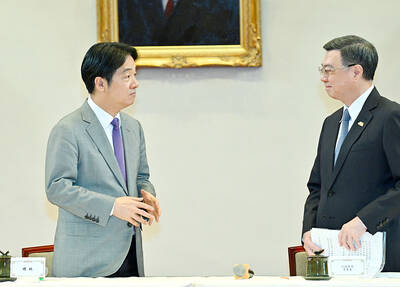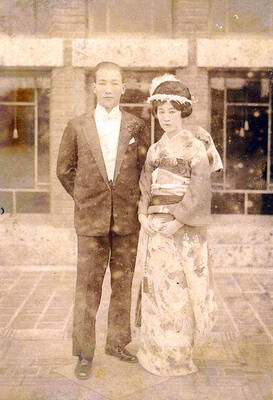The best classical DVDs dating from this year to come my way were Kenneth Branagh’s World War I version of Mozart’s The Magic Flute (Lien Yin), Massenet’s opera Manon with Anna Netrebko and Rolando Villazon, with Daniel Barenboim conducting (Deutsche Grammophon), Karajan’s versions of Cavalleria Rusticana and Pagliacci dating from 1968 and 1970 (also Deutsche Grammophon), and a privately-issued recording of Bach’s B Minor Mass from Taipei.
Branagh’s Magic Flute film combines high-spirited elation with serious thoughts, exactly as Mozart’s original opera does. It succeeds against all the odds, using mostly young singers and combining them with spectacular visual effects. Branagh says on a bonus track that he hopes what he’s created will make people feel that love is still possible, and it certainly does that, setting sex against war — the adoration of bodies and the people who inhabit them against mankind’s worst habit, tearing them ritually apart.
Manon isn’t many people’s favorite opera, but why it was once so popular is revealed in Vincent Paterson’s exciting and colorful staging. Everything is unpredictable — Paterson a director from Hollywood, Barenboim a conductor who’d probably never been near Massenet before, and two charismatic and alluring singers as the doomed lovers. This product is full of brio, glamour and zest.
Karajan’s Cav and Pag are classic renditions that it’s wonderful to have at last on DVD. The first starring Fiorenza Cossotto, the second Jon Vickers, they’re characterized by their lucidity and inner strength. The images are intensely clear and memorable, and the music — well, this is Karajan, even if the scores are remote from his usual areas of expertise.
Taiwan’s Evergreen Symphony Orchestra and Philharmonic Chorus gave what was claimed to be the first ever Taiwan performance of Bach’s B Minor Mass on March 29 this year — astonishing, if true, as this is one of the summits of world music. It was a stupendous event, and was recorded by the Philharmonia technicians. It’s never been released, but a privately-made DVD is in circulation in Taipei, and if you can find one there could be no legal restriction on making a copy. Orchestra and chorus members are both probably worth a try, or even the Philharmonia administration. Believe me, it’s worth the effort.

Under pressure, President William Lai (賴清德) has enacted his first cabinet reshuffle. Whether it will be enough to staunch the bleeding remains to be seen. Cabinet members in the Executive Yuan almost always end up as sacrificial lambs, especially those appointed early in a president’s term. When presidents are under pressure, the cabinet is reshuffled. This is not unique to any party or president; this is the custom. This is the case in many democracies, especially parliamentary ones. In Taiwan, constitutionally the president presides over the heads of the five branches of government, each of which is confusingly translated as “president”

Sept. 1 to Sept. 7 In 1899, Kozaburo Hirai became the first documented Japanese to wed a Taiwanese under colonial rule. The soldier was partly motivated by the government’s policy of assimilating the Taiwanese population through intermarriage. While his friends and family disapproved and even mocked him, the marriage endured. By 1930, when his story appeared in Tales of Virtuous Deeds in Taiwan, Hirai had settled in his wife’s rural Changhua hometown, farming the land and integrating into local society. Similarly, Aiko Fujii, who married into the prominent Wufeng Lin Family (霧峰林家) in 1927, quickly learned Hoklo (commonly known as Taiwanese) and

The Venice Film Festival kicked off with the world premiere of Paolo Sorrentino’s La Grazia Wednesday night on the Lido. The opening ceremony of the festival also saw Francis Ford Coppola presenting filmmaker Werner Herzog with a lifetime achievement prize. The 82nd edition of the glamorous international film festival is playing host to many Hollywood stars, including George Clooney, Julia Roberts and Dwayne Johnson, and famed auteurs, from Guillermo del Toro to Kathryn Bigelow, who all have films debuting over the next 10 days. The conflict in Gaza has also already been an everpresent topic both outside the festival’s walls, where

The low voter turnout for the referendum on Aug. 23 shows that many Taiwanese are apathetic about nuclear energy, but there are long-term energy stakes involved that the public needs to grasp Taiwan faces an energy trilemma: soaring AI-driven demand, pressure to cut carbon and reliance on fragile fuel imports. But the nuclear referendum on Aug. 23 showed how little this registered with voters, many of whom neither see the long game nor grasp the stakes. Volunteer referendum worker Vivian Chen (陳薇安) put it bluntly: “I’ve seen many people asking what they’re voting for when they arrive to vote. They cast their vote without even doing any research.” Imagine Taiwanese voters invited to a poker table. The bet looked simple — yes or no — yet most never showed. More than two-thirds of those